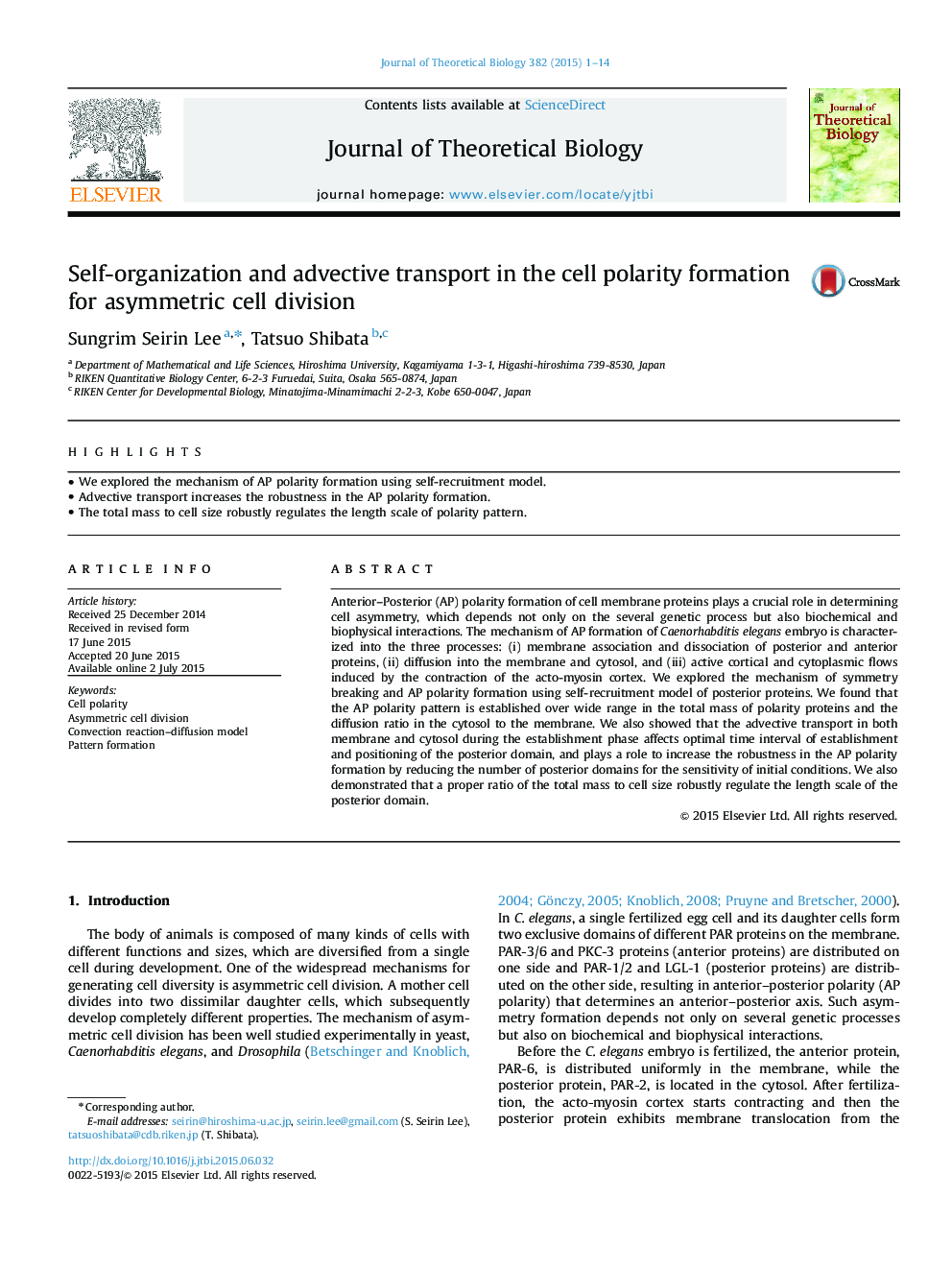| Article ID | Journal | Published Year | Pages | File Type |
|---|---|---|---|---|
| 6369507 | Journal of Theoretical Biology | 2015 | 14 Pages |
Abstract
Anterior-Posterior (AP) polarity formation of cell membrane proteins plays a crucial role in determining cell asymmetry, which depends not only on the several genetic process but also biochemical and biophysical interactions. The mechanism of AP formation of Caenorhabditis elegans embryo is characterized into the three processes: (i) membrane association and dissociation of posterior and anterior proteins, (ii) diffusion into the membrane and cytosol, and (iii) active cortical and cytoplasmic flows induced by the contraction of the acto-myosin cortex. We explored the mechanism of symmetry breaking and AP polarity formation using self-recruitment model of posterior proteins. We found that the AP polarity pattern is established over wide range in the total mass of polarity proteins and the diffusion ratio in the cytosol to the membrane. We also showed that the advective transport in both membrane and cytosol during the establishment phase affects optimal time interval of establishment and positioning of the posterior domain, and plays a role to increase the robustness in the AP polarity formation by reducing the number of posterior domains for the sensitivity of initial conditions. We also demonstrated that a proper ratio of the total mass to cell size robustly regulate the length scale of the posterior domain.
Related Topics
Life Sciences
Agricultural and Biological Sciences
Agricultural and Biological Sciences (General)
Authors
Sungrim Seirin Lee, Tatsuo Shibata,
